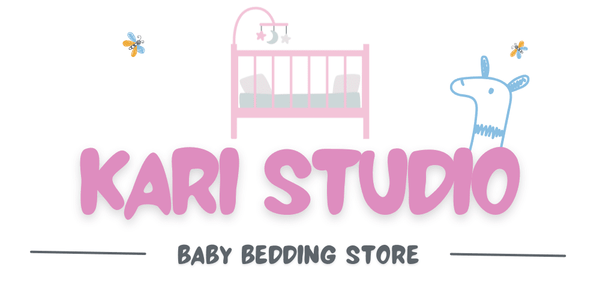Sicherheitsstandards für Kinderbetten legen die Regeln für den Bau jedes Babybetts fest. Seit Inkrafttreten der neuen Bundesvorschriften wurden in den USA über 11 Millionen Kinderbetten und Laufgitter zurückgerufen. Die meisten Eltern halten ein Kinderbett für ein einfaches Möbelstück. Die verborgene Wahrheit ist, dass diese Regeln still und leise unzählige Babyleben gerettet und die Schlafenszeit von einem Risiko in einen sicheren Hafen verwandelt haben.
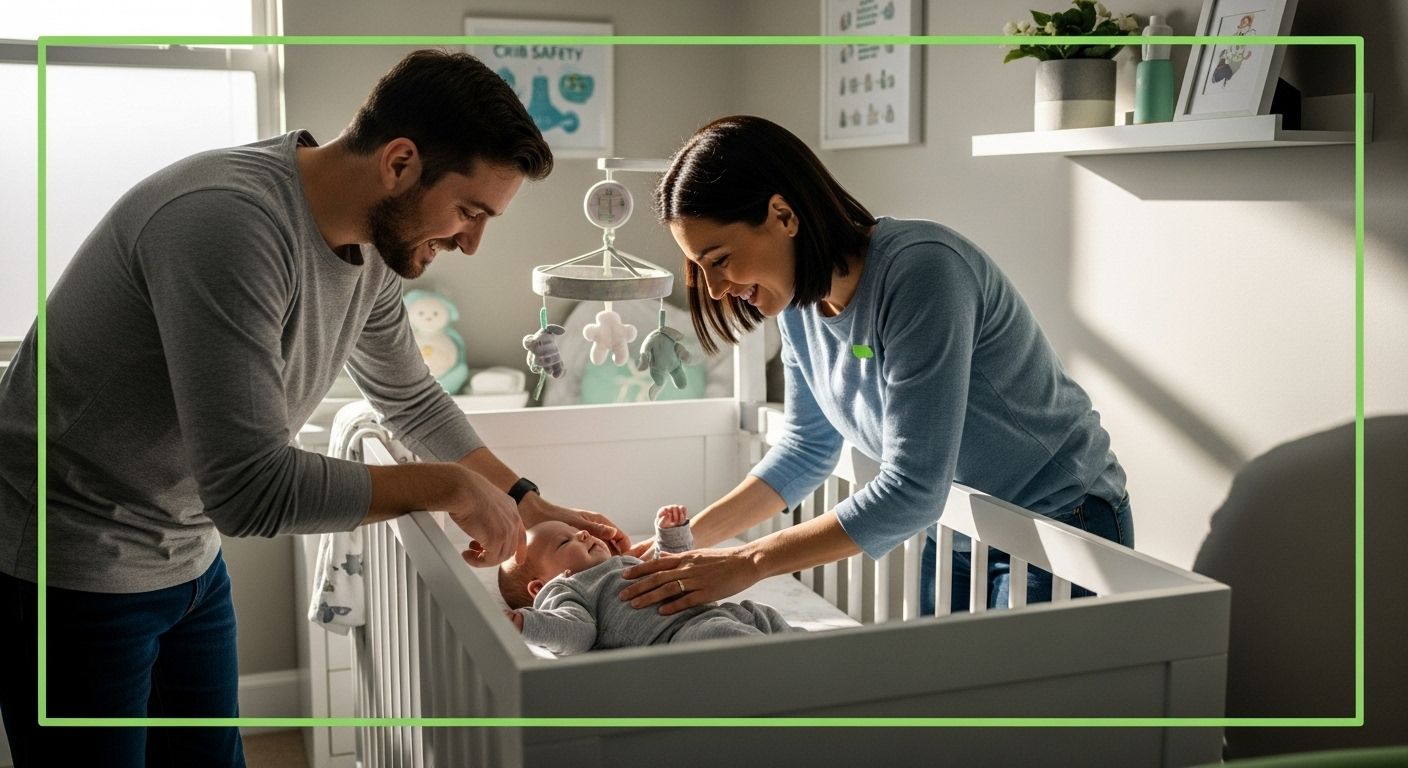
Inhaltsverzeichnis
- Was sind Sicherheitsstandards für Kinderbetten?
- Warum sind Sicherheitsstandards für Kinderbetten wichtig?
- Wie Sicherheitsstandards für Kinderbetten Säuglinge schützen
- Hauptmerkmale sicherer Kinderbetten
- Aufsichtsbehörden und Compliance verstehen
Kurze Zusammenfassung
| Wegbringen | Erläuterung |
|---|---|
| Standards für Kinderbetten verhindern Verletzungen von Säuglingen. | Umfassende Sicherheitsstandards zielen darauf ab, Konstruktionsfehler und Gefahren bei Kinderbetten zu beseitigen und so eine sichere Schlafumgebung für Säuglinge zu gewährleisten. |
| Obligatorische Tests verbessern die Compliance. | Strenge Bundesvorschriften verlangen von den Herstellern, dass sie Kinderbetten vor dem Verkauf auf Stabilität und Sicherheit testen, um sicherzustellen, dass sie die Sicherheitskriterien erfüllen. |
| Designelemente sind von entscheidender Bedeutung. | Der richtige Lattenabstand, sichere Beschläge und ungiftige Materialien sind entscheidende Merkmale, die Säuglinge vor dem Einklemmen und Verletzungen in Kinderbetten schützen. |
| Aufsichtsbehörden setzen Sicherheitsmaßnahmen durch. | Behörden wie die US Consumer Product Safety Commission entwickeln und überwachen Sicherheitsstandards für Kinderbetten, um die fortlaufende Einhaltung und Verantwortlichkeit der Hersteller sicherzustellen. |
| Die Sicherheit von Kinderbetten senkt die Gesundheitskosten. | Durch die Vermeidung von Verletzungen tragen wirksame Sicherheitsstandards für Kinderbetten dazu bei, die Gesundheitsausgaben zu senken und das allgemeine Wohlbefinden des Säuglings zu fördern. |
Was sind Sicherheitsstandards für Kinderbetten?
Sicherheitsstandards für Kinderbetten umfassen umfassende Vorschriften und Richtlinien zum Schutz von Säuglingen vor potenziellen Gefahren während des Schlafs und der Ruhe. Diese wichtigen Standards legen präzise Anforderungen an Design, Konstruktion und Leistung von Kinderbetten fest, um das Risiko von Verletzungen oder tödlichen Unfällen zu minimieren.
Den Zweck von Sicherheitsnormen verstehen
Das Hauptziel von Sicherheitsstandards für Kinderbetten ist die Prävention. Diese Vorschriften zielen darauf ab, Konstruktionsfehler und strukturelle Schwächen zu beseitigen, die gefährdeten Säuglingen potenziell schaden könnten. Laut der US-amerikanischen Consumer Product Safety Commission decken umfassende Sicherheitsstandards mehrere kritische Aspekte der Herstellung und des Designs von Kinderbetten ab.
Wichtige Bereiche, die durch die Sicherheitsstandards für Kinderbetten abgedeckt sind:
- Lattenabstand, um ein Einklemmen des Säuglings zu verhindern
- Anforderungen an Passform und Ausrichtung der Matratze
- Strukturelle Integrität und Haltbarkeit der Hardware
- Materialsicherheit und schadstofffreie Konstruktion
- Kanten- und Eckendesign zur Minimierung des Verletzungsrisikos
Bundesvorschriften und Compliance
Im Jahr 2011 führten die USA strenge bundesstaatliche Sicherheitsstandards ein, die die Kinderbettenherstellung grundlegend veränderten. Diese Vorschriften schreiben spezifische Designkriterien und Testprotokolle vor, die jedes verkaufte Kinderbett erfüllen muss. Hersteller müssen die Einhaltung nun durch strenge Test- und Zertifizierungsverfahren nachweisen.
Zu den kritischen Sicherheitsanforderungen gehören:
- Wegfall von Klappbettkonstruktionen
- Obligatorische Festigkeits- und Haltbarkeitsprüfungen
- Präzise Messungen für Lamellenbreite und -abstand
- Anforderungen an Matratzenauflagesysteme
- Beschränkungen für potenziell gefährliche Materialien
Diese umfassenden Standards stellen einen entscheidenden Fortschritt in der Kindersicherheit dar und verwandeln Kinderbetten von potenziellen Gefahrenzonen in sichere Schlafumgebungen für Kleinkinder. Durch die Festlegung klarer, wissenschaftlich fundierter Richtlinien konnten die Aufsichtsbehörden die Verletzungs- und Sterberate von Kleinkindern, die auf unsichere Schlafbedingungen zurückzuführen sind, deutlich senken.
Warum sind Sicherheitsstandards für Kinderbetten wichtig?
Sicherheitsstandards für Kinderbetten sind nicht nur bürokratische Vorschriften, sondern lebensrettende Maßnahmen zum Schutz der Schwächsten unserer Gesellschaft. Diese Standards stellen ein grundlegendes Engagement für die Sicherheit von Säuglingen dar und berücksichtigen zahlreiche potenzielle Risiken, die zu schweren Verletzungen oder tragischen Todesfällen führen können.
Lebensbedrohliche Risiken verhindern
Die Sicherheit von Säuglingen ist ein komplexes Thema und erfordert akribische Aufmerksamkeit. Laut der US-amerikanischen Verbraucherschutzkommission kann eine unzureichende Gestaltung von Kinderbetten schwerwiegende Folgen für Säuglinge haben. Zu den potenziellen Gefahren zählen:
- Erstickungsgefahr durch falsche Matratzenpassform
- Strangulationsgefahr durch zu große Lamellenabstände
- Kopfeinklemmung in strukturellen Lücken
- Stürze aufgrund schwacher struktureller Unterstützung
- Vergiftung durch giftige Baumaterialien
Wirtschaftliche und soziale Auswirkungen
Neben den unmittelbaren körperlichen Risiken haben Sicherheitsstandards für Kinderbetten weitreichende wirtschaftliche und soziale Auswirkungen. Durch die Festlegung strenger Produktionsrichtlinien senken diese Vorschriften die mit Säuglingsverletzungen verbundenen Gesundheitskosten, verringern die potenzielle Haftung der Hersteller und geben Eltern die nötige Sicherheit.
Zu den umfassenderen gesellschaftlichen Vorteilen gehören:
- Reduzierte Kindersterblichkeitsrate
- Geringere Gesundheitsausgaben
- Verbessertes Verbrauchervertrauen
- Standardisierte Herstellungsverfahren
- Kontinuierliche Sicherheitsinnovation
Diese umfassenden Standards verwandeln Kinderbetten von potenziellen Gefahrenzonen in sichere Umgebungen. Durch wissenschaftliche Forschung, strenge Tests und kontinuierliche Verbesserung stellen Sicherheitsstandards eine kollektive gesellschaftliche Verpflichtung zum Schutz unserer wertvollsten und schwächsten Bevölkerung dar.
Wie Sicherheitsstandards für Kinderbetten Säuglinge schützen
Sicherheitsstandards für Kinderbetten dienen als umfassender Schutzschild und berücksichtigen systematisch zahlreiche potenzielle Risiken, die die Sicherheit von Säuglingen im Schlaf gefährden könnten. Diese sorgfältig ausgearbeiteten Richtlinien dienen als wichtiger Abwehrmechanismus gegen verschiedene physische und umweltbedingte Gefahren, die das Wohlbefinden eines Babys gefährden können.
Strukturelle Schutzmechanismen
Die primäre Schutzstrategie besteht darin, potenzielle physische Risiken durch präzise Designanforderungen zu eliminieren. Laut der US-amerikanischen Consumer Product Safety Commission konzentrieren sich Sicherheitsstandards auf die Vermeidung von drei primären Risikokategorien:
- Einklemmschutz : Vorgeschriebener bestimmter Lattenabstand, um das Einklemmen von Kopf oder Körper zu verhindern
- Stabilitätssicherung : Erfordert eine robuste Rahmenkonstruktion, um einen Zusammenbruch zu verhindern
- Materialsicherheit : Gewährleistung ungiftiger, langlebiger Materialien, die nicht brechen oder splittern
Umfassende Strategien zur Risikominderung
Zu den wichtigsten Schutzdesignelementen gehören:
- Präzise Messungen für Kinderbettmaße
- Begrenzte Abstände zwischen Matratze und Kinderbettwänden
- Beseitigung potenziell gefährlicher Konstruktionsmerkmale
- Verpflichtende Festigkeitsprüfung für Strukturbauteile
- Anforderungen an glatte, abgerundete Kanten
Diese Standards verwandeln Kinderbetten von potenziellen Gefahrenzonen in sichere Umgebungen, indem sie jeden erdenklichen Risikofaktor berücksichtigen.
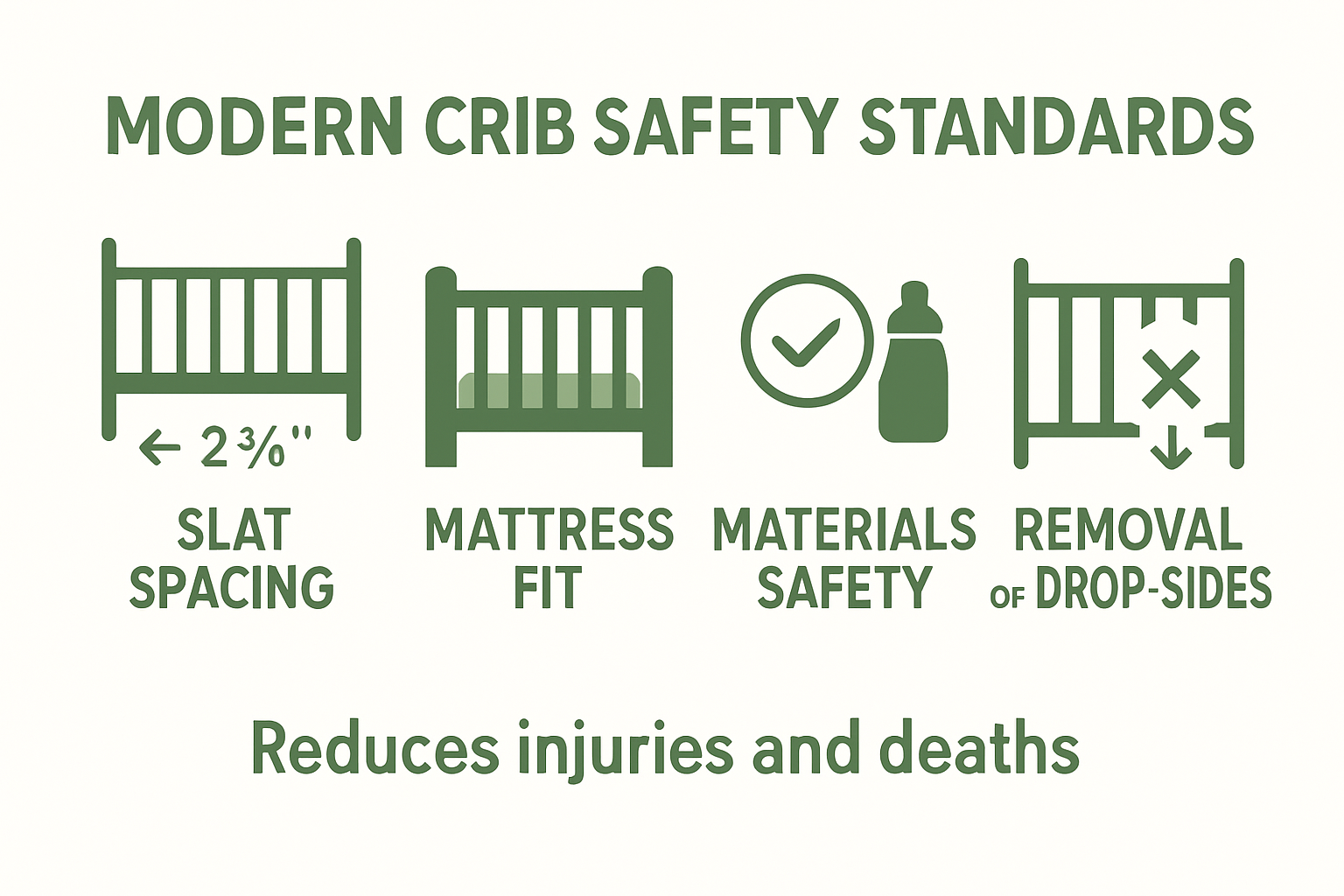
Durch wissenschaftliche Forschung und kontinuierliche Weiterentwicklung schaffen Sicherheitsvorschriften ein mehrschichtiges Abwehrsystem, das potenzielle Gefahren für die Sicherheit von Kleinkindern antizipiert und neutralisiert. Durch die Festlegung strenger Herstellungsrichtlinien bieten diese Standards Eltern einen zuverlässigen Rahmen zum Schutz ihrer schwächsten Familienmitglieder.
Hauptmerkmale sicherer Kinderbetten
Sichere Kinderbetten sind eine komplexe technische Leistung und wurden sorgfältig entwickelt, um Säuglingen in ihren empfindlichsten Schlafphasen maximalen Schutz zu bieten. Die Kombination aus präzisen Strukturelementen und sorgfältig durchdachten Designmerkmalen schafft eine umfassende Sicherheitsumgebung für Babys.
Komponenten zur strukturellen Integrität
Laut derUS-amerikanischen Verbraucherschutzkommission sind folgende strukturelle Merkmale entscheidend für die Sicherheit eines Kinderbetts:
- Lattenabstand nicht mehr als 2 3/8 Zoll
- Robuste Eckpfosten mit minimaler Höhe
- Feste, eng anliegende Matratzenauflage
- Sichere und langlebige Hardwareverbindungen
- Glatte, abgerundete Kanten ohne scharfe Vorsprünge
Wesentliche Sicherheitsdesignelemente
Umfassende Sicherheitsfunktionen umfassen:
- Keine Aussparungen im Kopf- oder Fußteil
- Solide Konstruktion ohne Lücken und Schwachstellen
- Ungiftige, splitterfeste Materialien
- Konsistente Breiten- und Höhenmaße
- Fehlen von beweglichen oder herunterklappbaren Mechanismen
Hier ist eine Tabelle, die die wichtigsten strukturellen Merkmale und Designelemente aufschlüsselt, die ein sicheres Kinderbett ausmachen, und die Eltern und Käufern einen klaren Überblick bietet:
| Strukturmerkmal / Designelement | Was es gewährleistet |
|---|---|
| Lamellenabstand ≤ 2 3/8 Zoll | Verhindert das Einklemmen von Kleinkindern |
| Robuste, niedrige Eckpfosten | Verhindert Verletzungen durch Kleidung/Schlingen |
| Feste, eng anliegende Matratze | Reduziert das Erstickungsrisiko |
| Sichere Hardware und Verbindungen | Verhindert strukturelles Versagen |
| Glatte, abgerundete Kanten | Minimiert Verletzungen durch scharfe Oberflächen |
| Keine Kopf-/Fußteilausschnitte | Entfernt mögliche Einklemmpunkte |
| Ungiftige, splitterfeste Materialien | Verhindert Vergiftungen und Splitter |
| Keine herunterklappbaren Seitenwände oder beweglichen Mechanismen | Erhöht die Stabilität des Kinderbetts und die Sicherheit des Säuglings |
Diese komplexen Designspezifikationen wirken synergetisch zusammen, um eine schützende Umgebung zu schaffen, die potenzielle Risiken minimiert. Durch die Festlegung strenger Fertigungsstandards und Sicherheitsvorschriften wird sichergestellt, dass jedes Kinderbett einen sicheren Schlafplatz bietet, der Säuglinge vor potenziellen körperlichen Gefahren schützt. Ziel ist nicht nur die Einhaltung der Vorschriften, sondern die Schaffung eines umfassenden Sicherheitssystems, das potenzielle Gefahren vorhersieht und verhindert, bevor sie entstehen.
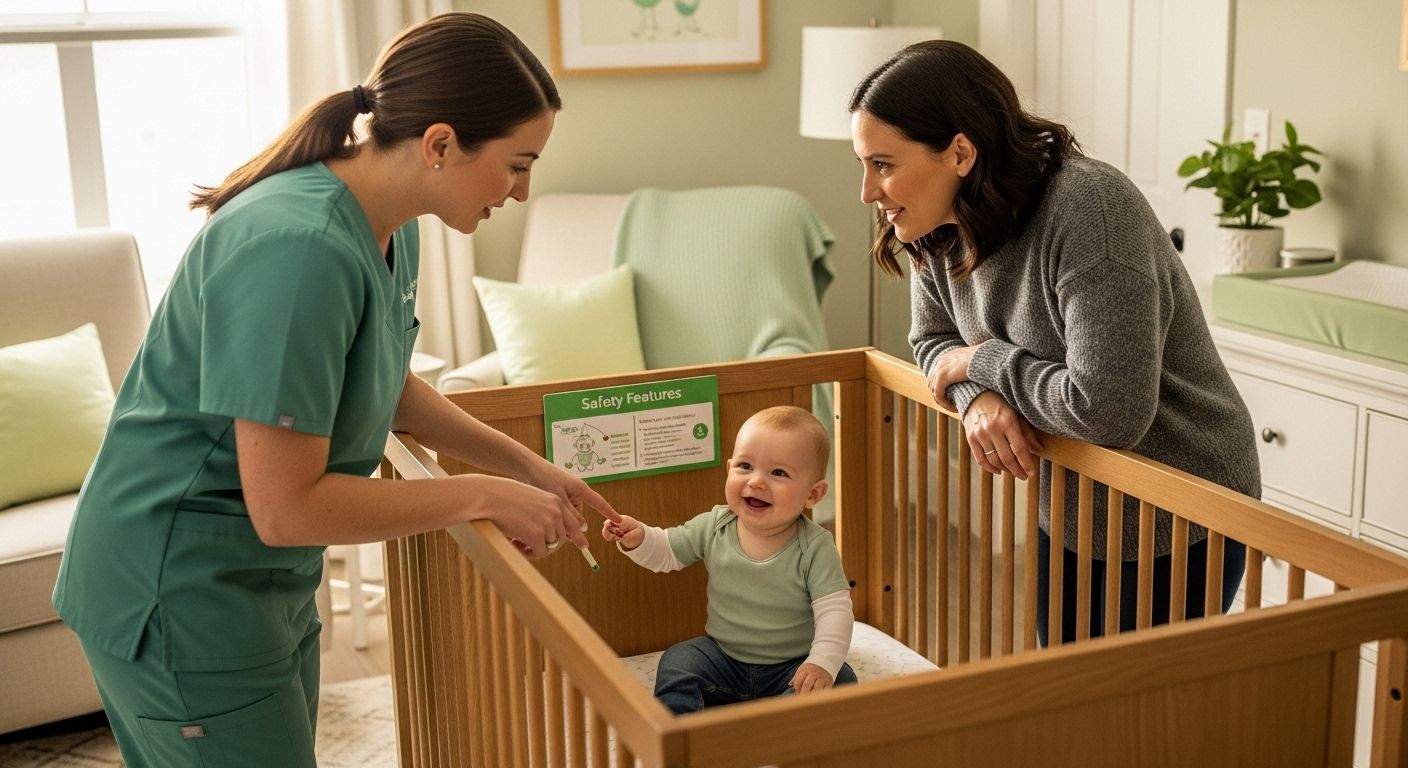
Regulierungsbehörden und Compliance verstehen
Regulierungsbehörden spielen eine entscheidende Rolle bei der Festlegung und Durchsetzung umfassender Sicherheitsstandards zum Schutz von Kleinkindern vor potenziellen Gefahren. Diese Organisationen entwickeln, implementieren und überwachen Richtlinien, die von den Herstellern eingehalten werden müssen, um ein Höchstmaß an Kindersicherheit zu gewährleisten.
Primäre Regulierungsbehörden
Die US-amerikanische Verbraucherschutzbehörde (Consumer Product Safety Commission) ist die wichtigste Bundesbehörde, die für die Sicherheitsstandards für Kinderbetten in den USA zuständig ist. Zu den wichtigsten Aufgaben der Aufsichtsbehörden gehören:
- Entwicklung umfassender Sicherheitsrichtlinien
- Durchführung strenger Produkttests
- Festlegung verbindlicher Fertigungsstandards
- Überwachung der Produktkonformität
- Rückrufaktionen für unsichere Produkte
Compliance- und Zertifizierungsprozess
Kritische Compliance-Anforderungen umfassen:
- Obligatorische Labortests von Kinderbettkonstruktionen
- Detaillierte Dokumentation durch die Hersteller
- Produktzertifizierung vor der Markteinführung
- Laufende Sicherheitsbewertungen
- Strenge Strafen bei Nichteinhaltung
Diese Regulierungsmechanismen schaffen einen robusten Rahmen, der Sicherheitsstandards von theoretischen Richtlinien in praktische, durchsetzbare Schutzmaßnahmen verwandelt. Durch die Festlegung klarer Erwartungen und die Implementierung strenger Prüfprozesse stellen die Aufsichtsbehörden sicher, dass jedes verkaufte Kinderbett die höchstmöglichen Sicherheitskriterien erfüllt. Das ultimative Ziel ist nicht nur die technische Konformität, sondern die Schaffung eines umfassenden Sicherheitssystems, das Säuglinge proaktiv vor potenziellen Risiken schützt.
Sorgen Sie mit den Kinderzimmerlösungen von Kari Studio für mehr Sicherheit im Kinderbett
Machen Sie sich Sorgen, ob das Kinderbett Ihres Babys den neuesten Sicherheitsstandards entspricht? Die Gestaltung eines sicheren Kinderzimmers kann eine Herausforderung sein, insbesondere wenn die Risiken Einklemmen, giftige Materialien oder schlechtes Design umfassen. Wir bei Kari Studio verstehen Ihre Bedenken und sind auf Produkte spezialisiert, die Sicherheit, Qualität und ein gutes Gefühl gewährleisten. Unsere Auswahl basiert auf den in diesem Artikel beschriebenen Sicherheitsstandards für Kinderbetten und unterstützt Sie bei Ihrem Ziel, eine sichere Umgebung für Ihr Kleines zu schaffen.
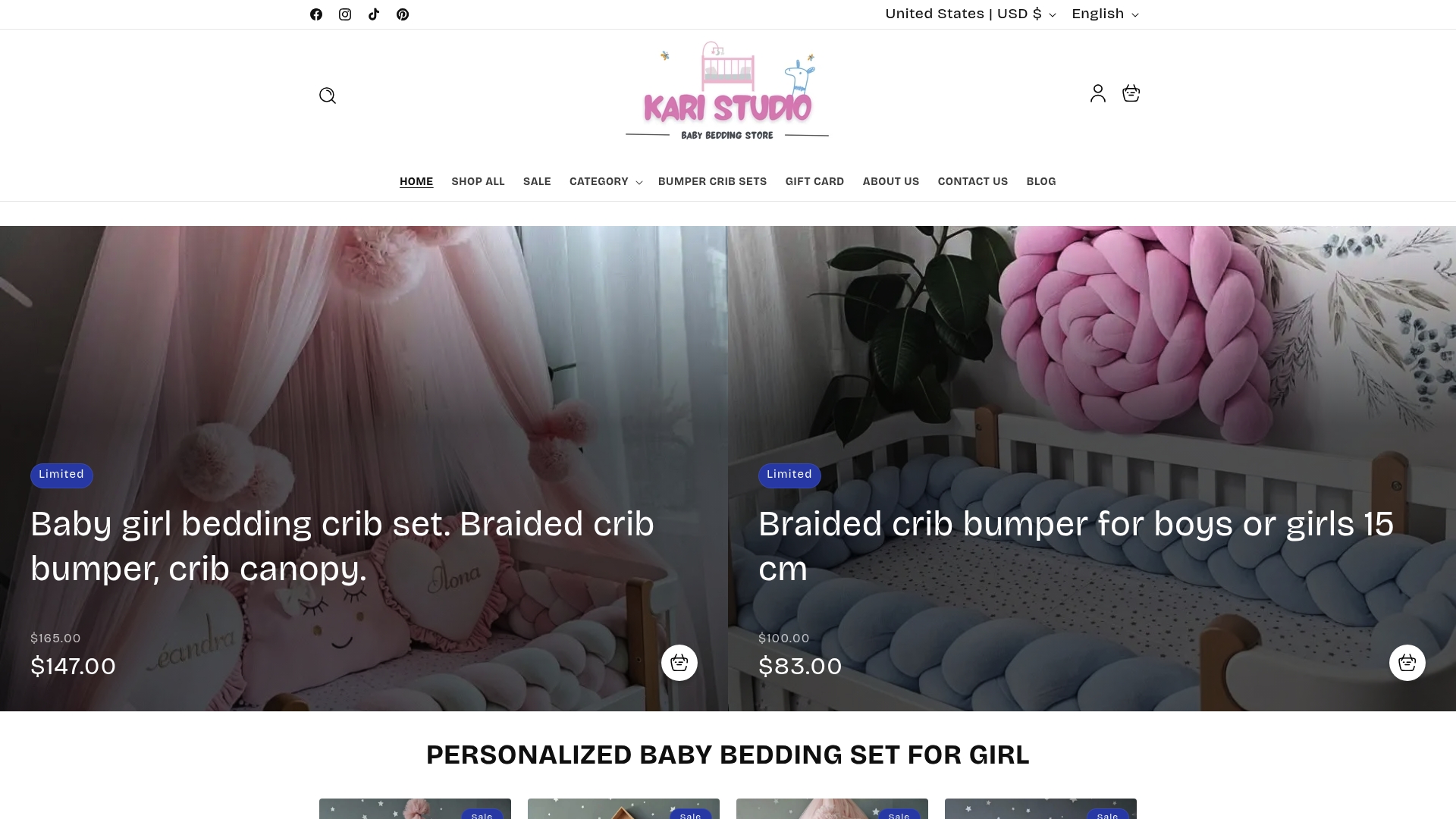
Schützen Sie Ihr Kind optimal. Entdecken Sie unser sorgfältig ausgewähltes Sortiment an Kinderzimmerzubehör und Bettumrandungen , die strengen Sicherheitskriterien entsprechen. Jedes Produkt macht Ihr Kinderzimmer sicherer und komfortabler. Besuchen Sie Kari Studio und erleben Sie den Unterschied in Qualität und Zuverlässigkeit. Kaufen Sie noch heute ein und genießen Sie morgen einen sicheren Schlaf.
Häufig gestellte Fragen
Welche Sicherheitsstandards gelten für Kinderbetten?
Sicherheitsstandards für Kinderbetten sind Vorschriften und Richtlinien, die die Sicherheit von Kinderbetten gewährleisten sollen, indem das Verletzungs- oder Unfallrisiko für Säuglinge während des Schlafs minimiert wird.
Warum sind Sicherheitsstandards für Kinderbetten wichtig?
Sicherheitsstandards für Kinderbetten sind von entscheidender Bedeutung, da sie Säuglinge vor potenziellen Gefahren schützen, das Risiko schwerer Verletzungen verringern und durch die Gewährleistung einer sicheren Schlafumgebung zu einer niedrigeren Säuglingssterblichkeitsrate beitragen.
Auf welche wichtigen Sicherheitsmerkmale sollte man bei einem Kinderbett achten?
Achten Sie bei der Auswahl eines Kinderbetts auf einen Lattenabstand von maximal 6 cm, eine feste und eng anliegende Matratze, glatte Kanten und ungiftige Materialien. Vermeiden Sie Kinderbetten mit beweglichen oder herunterklappbaren Seitenteilen.
Wie funktioniert die Zertifizierung der Kinderbett-Konformität?
Die Konformitätszertifizierung umfasst obligatorische Labortests der Kinderbettkonstruktionen, um die Einhaltung der Sicherheitsstandards zu gewährleisten. Hersteller müssen detaillierte Aufzeichnungen führen und sich fortlaufenden Sicherheitsprüfungen unterziehen, um sicherzustellen, dass ihre Kinderbetten den festgelegten Richtlinien entsprechen.

